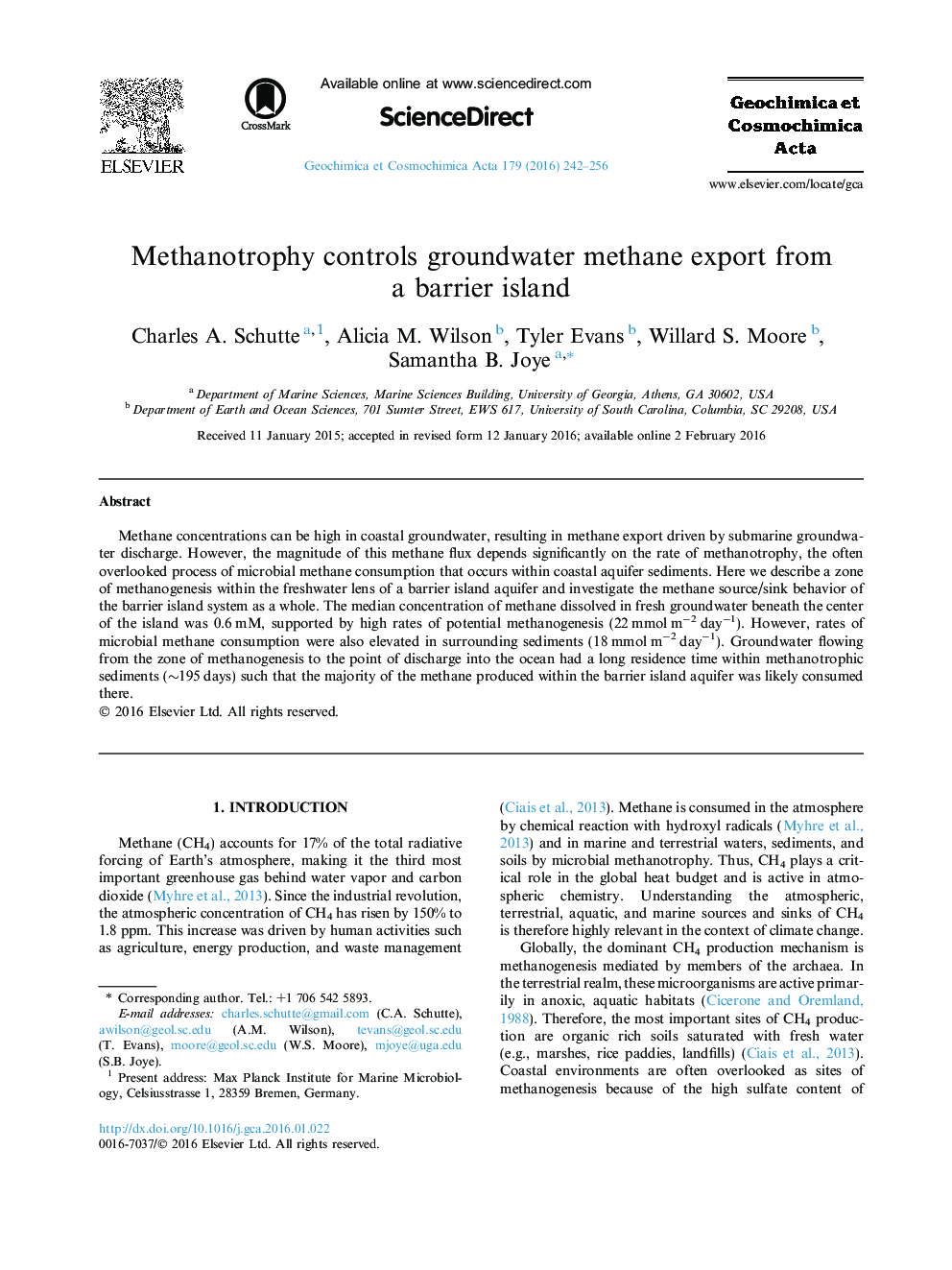| Article ID | Journal | Published Year | Pages | File Type |
|---|---|---|---|---|
| 6437598 | Geochimica et Cosmochimica Acta | 2016 | 15 Pages |
Methane concentrations can be high in coastal groundwater, resulting in methane export driven by submarine groundwater discharge. However, the magnitude of this methane flux depends significantly on the rate of methanotrophy, the often overlooked process of microbial methane consumption that occurs within coastal aquifer sediments. Here we describe a zone of methanogenesis within the freshwater lens of a barrier island aquifer and investigate the methane source/sink behavior of the barrier island system as a whole. The median concentration of methane dissolved in fresh groundwater beneath the center of the island was 0.6 mM, supported by high rates of potential methanogenesis (22 mmol mâ2 dayâ1). However, rates of microbial methane consumption were also elevated in surrounding sediments (18 mmol mâ2 dayâ1). Groundwater flowing from the zone of methanogenesis to the point of discharge into the ocean had a long residence time within methanotrophic sediments (â¼195 days) such that the majority of the methane produced within the barrier island aquifer was likely consumed there.
